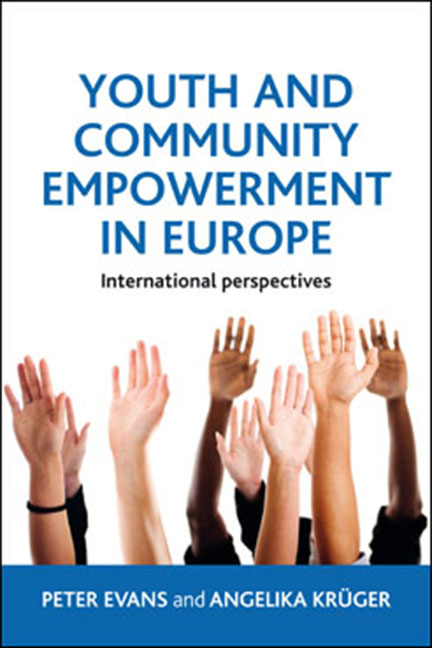Book contents
- Frontmatter
- Dedication
- Contents
- List of figures and tables
- List of abbreviations
- Acknowledgements
- Preface
- Background to the Youth Empowerment Partnership Programme
- one Introduction: the theoretical context of the YEPP approach
- two YEPP I: implementation
- three YEPP I: key changes in YEPP Local Programme Sites
- four YEPP I: meeting the goals
- five YEPP II: learning from YEPP I
- six YEPP II: portraits and overall programme outcomes
- seven YEPP I and II: conclusions and policy implications
- Epilogue: The future of YEPP
- References
- Index
five - YEPP II: learning from YEPP I
Published online by Cambridge University Press: 07 September 2022
- Frontmatter
- Dedication
- Contents
- List of figures and tables
- List of abbreviations
- Acknowledgements
- Preface
- Background to the Youth Empowerment Partnership Programme
- one Introduction: the theoretical context of the YEPP approach
- two YEPP I: implementation
- three YEPP I: key changes in YEPP Local Programme Sites
- four YEPP I: meeting the goals
- five YEPP II: learning from YEPP I
- six YEPP II: portraits and overall programme outcomes
- seven YEPP I and II: conclusions and policy implications
- Epilogue: The future of YEPP
- References
- Index
Summary
YEPP II: 2007–11
The internal and external evaluations of YEPP I provided convincing evidence that YEPP works in fully implemented and supported sites. In addition, following consultations with partner organisations and key actors of the YEPP network and with the foundations that had expressed an interest in participating in the next phase of YEPP, the partners and stakeholders of YEPP decided to extend the programme by a further multi-year period (2007–11). This decision reflected the understanding that bringing about sustainable social change in disadvantaged areas through an empowerment and partnership approach is a long-term process to which they were willing to commit.
Furthermore they had come to recognise the growing need for a holistic, multi-level programme such as YEPP, and this understanding led the partners to decide not only to continue working in the existing programme sites of YEPP I but also to expand to other disadvantaged communities. This decision also had a strategic purpose. The partners and stakeholders wanted to establish a critical number of sites in order to give extra weight to their efforts to influence policies at different levels. In order to achieve this ambition they decided to shift the focus of the programme from research and development to one emphasising development, dissemination and advocacy. The importance of evaluation was recognised, but it was decided to stress self-evaluation as an integral part of the work.
Strategies for YEPP II in response to lessons learnt
In the process of designing the second phase of YEPP, specific strategies were developed in order to reflect the lessons learnt from the first phase, as presented in the previous chapters, and to overcome remaining challenges. In the following sections, different examples of lessons learnt – which are obviously interlinked with each other – and how they were used in creating YEPP II are described.
Lesson 1: YEPP works and it works best when fully implemented
The evaluation of the first phase of YEPP had shown that three factors were crucial for a successful implementation of YEPP and to bring about change:
• needs of the community for change and strong motivation and commitment of local stakeholders to bring about change;
• clear understanding of and commitment to the common ground across all the Local Programme Sites: that is, the YEPP principles, the overall programme goals and the concept of change;
• reliable support and resources.
- Type
- Chapter
- Information
- Youth and Community Empowerment in EuropeInternational Perspectives, pp. 101 - 120Publisher: Bristol University PressPrint publication year: 2012



